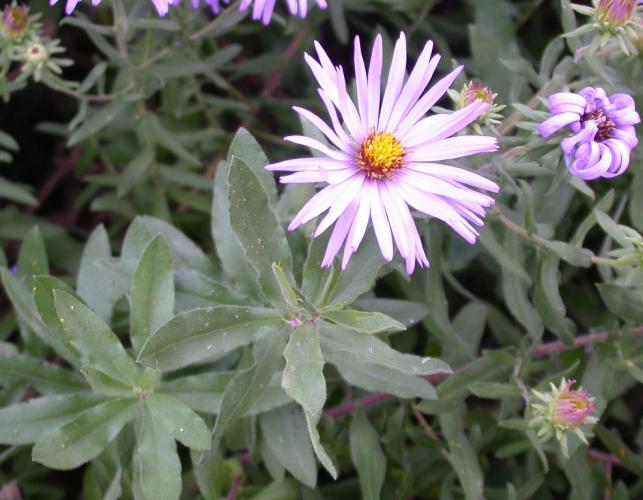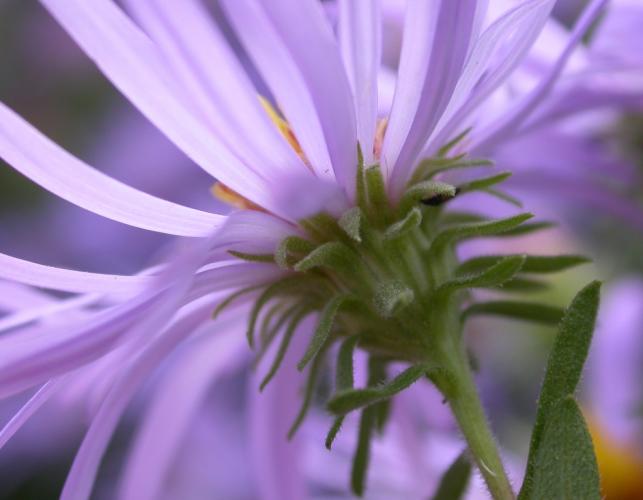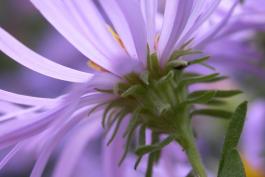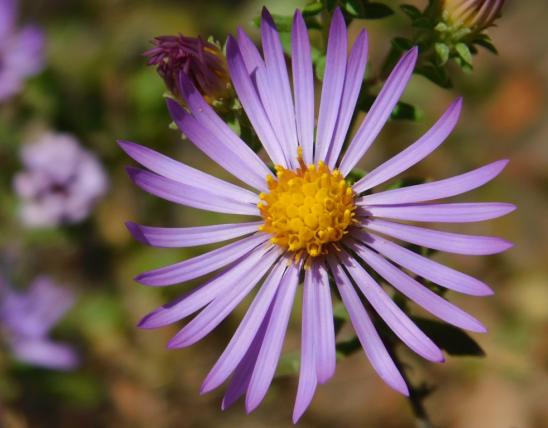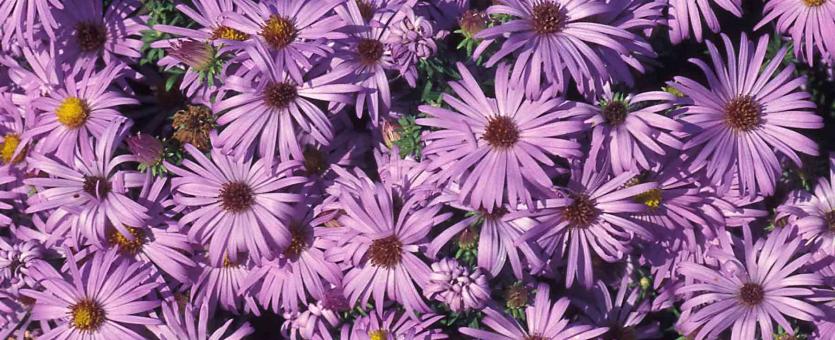
Oblong-leaved aster, or aromatic aster, is a much-branched perennial with fragrant foliage. Flowerheads terminal, few to many heads, with 20–40 ray florets that are blue or purple (rarely rose pink); disk florets yellow. Blooms July–November. Leaves alternate, sessile, narrow, clasping the stem, with or without small “ears” at the base, oblong to lance-shaped, lacking teeth, from 1–3½ inches long.
Similar species: There are 24 species of Symphyotrichum in Missouri, plus many hybrids and varieties. This species is notable for the fragrance of its foliage and its crowded, stalkless, clasping, hairy, narrow (oblong) leaves. For more information about our native New World asters, see their group page.
Height: to 3 feet.
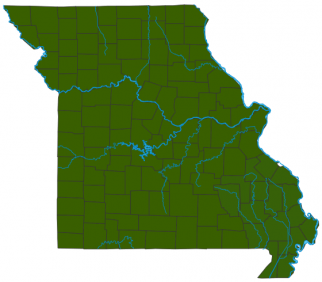
Scattered mostly south of Missouri River except Southeast Lowlands, scattered in northern Missouri, especially in eastern counties. Cultivated statewide.
Habitat and Conservation
Occurs in glades, ledges and tops of bluffs, upland prairies, openings of dry upland forests and along railroads. As with several other of our native asters, this species can hybridize with its close relatives where they grow in the same vicinity. Special cultivars and hybrids are often available at garden centers.
Status
For many years, nearly all native North American asters were considered members of the genus Aster, formerly a very large genus that is now considered to comprise Old World species almost exclusively. Molecular (DNA) studies have shown that the former genus had included several groups that deserve to be treated as separate genera. The only "true aster" (in the genus Aster) that grows wild in Missouri is a native of Eurasia that escapes from gardens.
Human Connections
In cultivation, this native aster does well in rock gardens, where it develops a pleasant shrubby habit when grown in full sun. Other asters can become more lanky. Like most of our native asters, it blooms late in the season and contributes to the beauty of Missouri's fall landscape.
Ecosystem Connections
Many types of bees, butterflies, and skippers visit the flowers. Moth caterpillars and various other insects eat the leaves. Deer and some other mammals eat the foliage, and wild turkey eat the seeds.

